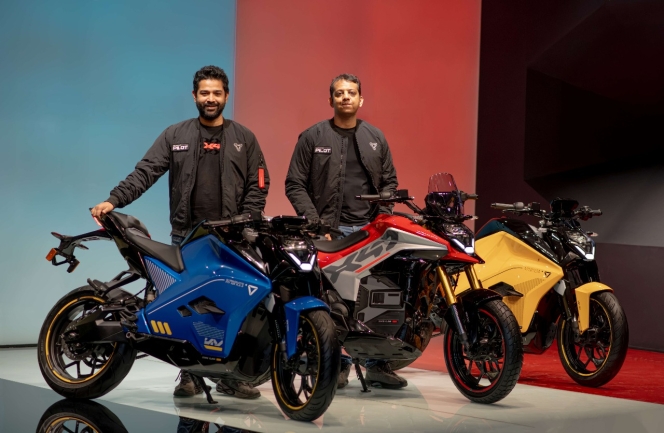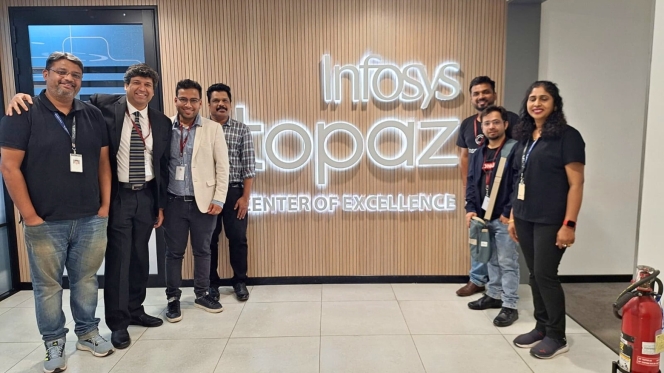
The reasons may be entirely political or geopolitical in nature, the road ahead for Chinese automakers in India looks difficult.
Chinese automaker BYD and its Indian partner Olectra Greentech (formerly known as Goldstone Infratech) is in news for its proposal to set up a manufacturing plant for electric cars in India. Certain ministry officials involved in vetting the proposal have raised security concerns, claimed an industry source.
The truth is hard to ascertain. It is also tough to ascertain the news in various media platforms regarding BYD conveying to Olectra that it would like to drop the proposal to invest in India. The proposal to invest is claimed to be worth USD 1 billion.
Since the clash between the Indian armed forces and Chinese armed forces at Galwan valley in 2020, the Indian Government has tightened scrutiny of Chinese investments in the country. The ones to get affected by this move have not just been the Chinese automakers but also producers of cell phones and other goods.
Key players in the Chinese EV market (also the world’s largest) such as BYD, SAIC and Geely have exerted their interest in exploring the Indian automobile market. While MG Motor India is a wholly-owned subsidiary of SAIC Motor, the Indian partners of BYD and Geely – Olectra Greentech and Adishwar Auto Ride respectively – are not legacy automotive players to be precise.
Against the emerging thought process that India produces among the world’s best automobiles, such joint ventures arrangements are likely to be met with greater scrutiny, the China sentiment included. With much work going on in India on the alternative fuel technologies front, including electric, it is clear that any foreign technology or effort will only be accepted after being truly ‘Indian-ised’ or localised.
The low entry barrier supporting the entry of start ups such as Ather Energy and Ola Electric in the EV space in India, legacy players such as Mahindra & Mahindra and Tata Motors have not stayed behind in their efforts to make exciting EVs that can address the real-time needs of Indian buyers as well as those in other markets.
What needs careful consideration is that they are competing with global players such as Honda and Toyota, which makes the Indian automotive market a tough place to be in.
While players like MG have an Indian management even though it is a wholly owned subsidiary of SAIC Motor (China), the fact is, the going has gotten tough for it too. The situation as a whole for Chinese companies or those that have Chinese partners seems to have turned difficult.
At one end there's rising competition coupled with China sentiment and at the other, there's the need to invest and grow.
With India said to be on the path to become the world’s biggest micro electromobility market, a significant shift at various levels is apparent.
As the biggest employer in the country and the biggest tax player too, the Indian auto sector, the government is keen, turns into a leading manufacturing hub of the world.
Courting EV players such as Tesla, the government seems clear about how it wants the foreign companies to behave when they come to do business in India. It has made itself clear that it is okay with Chinese players coming to India but they should conduct their operations lawfully and in compliance with laws of the country, mention sources. This points at the government being keen on Indian partners having a larger control of the joint venture, they add.
The answer to this thinking may be found in how China treats foreign players organisations wanting to do business there. It makes it necessary for the organisations to have a Chinese partner. Besides that, the foreign organisations are known to face face a number of regulatory and cultural challenges.
The authorities in China are said to favour its own over foreign players. This is despite the commitment by them to invest huge sums and ensure complete transparency in their dealings.
India as a democratic country has its own regulatory and cultural challenges. As the world’s largest two-wheeler market, fourth largest light vehicle market and fifth largest commercial vehicle market, India is likely to come across as a more balanced market with the participation of leading American, European and Japanese brands.
Some may have left because of reasons that are complex and also because of a marketplace that is tough to understand as well as crack. The homegrown automakers such as Mahindra & Mahindra, Ashok Leyland and Tata Motors have been giving tough condition to the foreign players in India by smartly moving up the ladder. They are also expanding their reach to some of the most competitive markets across the globe.
They have been acquiring companies but aren't exactly acquisition hungry. It is not by fluke that Tata Motors, which owns Jaguar Land Rover and the Korean Daewoo commercial vehicle business, has come to command 86 percent of the EV market in India. The automaker has been investing in technology and transparently engaging with its suppliers and other stakeholders to build a market reach.
Mahindra & Mahindra has been making big investments in setting up as well as upgrading its R&D facilities in India. It is making big investments in upgrading its design and development facilities in the country; in testing and validation facilities as well. A sneak peek in the MRV will reveal the extend of efforts being taken.
Underling the Indian Government’s seriousness to turn the Indian auto industry into a leading global manufacturing hub is the stress on local technology development, local content and local manufacture. The efforts to make chips is indicative of the same.
While the BYD, Olectra or BYD-Olectra badged electric buses operated by city and state transport undertakings (state government organisations largely) may be a common sight on Indian roads, it is also evident that the foot print of electric buses made by homegrown manufacturers such as Ashok Leyland and Tata Motors is also fast expanding.
It was roughly two years ago that BYD announced its plans to enter the Indian electric car market, albeit at the premium end with the e6 MPV and latter with the stylish Atto 3 SUV. The company, claim sources, has already invested over USD 200 million in India. Busy expanding its dealership network across the country, it has sold over 2,000 e-cars in India in the last one and a half years, they add.
But then, BYD is not the first Chinese auto maker whose proposal to invest in India seems to have run into rough weather. A few months back, MG Motor India was into news regarding it’s parent company wanting to dilute its stake in it. The reason being given for this, was the delay in the clearing the proposal to hike investment in Indian by its parent – SAIC Motor.
Even though it may appear as an iconic British brand or be projected as one, MG or Morris Garages is owned by a Chinese organisation. The products it offers in India are said to be of Chinese origin even though they are assembled at a factory in Halol, Gujarat.
With the proposal to invest by SAIC Motors being subjected to greater scrutiny, it is not surprising that MG Motor India is said to scout for a strategic investor to raise funds and fuel growth. Facing raid from the tax authority in November 2022, the company has been making efforts to cultivate a strong local supply chain for its products. It is also supporting the start up culture in India by showing interest for cooperation.
Despite the strong China sentiment, it cannot be refuted that businesses in India continue to source from there. A large amount of raw materials for the pharma industry are said to be sourced from there by the Indian pharma companies. Likewise, Indian auto companies are also known to source a good deal of parts – including batteries and electronic parts/modules – from China.
It is necessary that the government and people of India demand that whoever would like to business here should thoroughly engage with the local necessities, regulations and culture in spirit and on paper.
Neusoft And MapmyIndia Partner For Intelligent Mobility Solutions
- By MT Bureau
- December 06, 2025

Chinese technology company Neusoft Corporation and Mappls MapmyIndia have signed a Memorandum of Understanding (MoU) to leverage their strengths in software and data resources to collaborate deeply.
The companies will engage in joint technological development, ecosystem collaboration and resource integration to provide navigation products and intelligent mobility solutions tailored to localised needs in emerging markets such as Southeast Asia and India.
The partnership is a response to the fact that while global auto brands are expanding into Southeast Asia and India, they face challenges in these regions due to complex road conditions, unique traffic rules, extensive addressing systems and high localisation adaptation costs. These issues limit the ability of automakers to deliver a complete intelligent user experience.
Under the collaboration, Neusoft will adopt its OneCoreGo Global Intelligent Mobility Solution 6.0 Plus as the core technology carrier, deeply integrating MapmyIndia's map data, real-time traffic information and multi-dimensional value-added services. MapmyIndia is noted as the largest local mapping company in India, holding more than 90 percent market share in in-vehicle navigation.
The integration is intended to strengthen a full capability loop of ‘navigation + payment + interaction + connectivity + operations’.
Through API integration and technological convergence, the two parties will jointly develop navigation products and mobility solutions highly adapted to Southeast Asia, India and similar regional markets. These solutions will deliver precise route planning and real-time traffic guidance, address local user needs and continuously enhance product experience and scenario-based services. This will help automotive partners rapidly launch intelligent vehicle models with competitiveness in local markets.
The partnership enables Neusoft to combine the global end-to-end strengths of its solution with localised ecosystem resources, paving the ‘last mile’ for automakers entering the Southeast Asian and Indian markets and delivering comprehensive intelligent mobility experiences.
- Ultraviolette Automotive
- Zoho Corporation
- Lingotto
- F77
- X-47
- Shockwave
- Tesseract
- Narayan Subramaniam
- Niraj Rajmohan
Ultraviolette Secures $45 Million Growth Capital From Zoho And Lingotto
- By MT Bureau
- December 04, 2025

Bengaluru-based electric vehicle maker Ultraviolette Automotive has secured USD 45 million from Zoho Corporation and Lingotto, one of Europe's investment management companies as part of its ongoing Series E investment round.
The investment from Zoho Corporation was led by Sridhar Vembu, Mani Vembu and Kumar Vembu.
This growth capital will accelerate the domestic and international scale-up of current products F77 and X-47, as well as future product platforms Shockwave and Tesseract.
Ultraviolette has built a design and technology-led enterprise with the F77 and the recently launched X-47.
The company has expanded to 30 cities across India in a short span of 12 months and is expanding to 100 cities by mid-2026. The F77 motorcycles were recently launched in the United Kingdom, bringing Ultraviolette's presence to 12 countries across Europe.
Narayan Subramaniam, Co-Founder & CEO, Ultraviolette Automotive, said, “We are glad to announce our Series E investment from Zoho and Lingotto. Lingotto's legacy of backing iconic performance and mobility brands, combined with Zoho's long-term commitment to fostering cutting-edge Indian innovation, aligns perfectly with Ultraviolette's mission to build category-defining electric mobility solutions for India and global markets.”
Niraj Rajmohan, CTO & Co-Founder, Ultraviolette, said, "With the ongoing Series E investments, we are doubling down on growth and expanding our production to meet increasing demand. Our focus is on advancing breakthrough battery technology, elevating performance capabilities and expanding production to support upcoming product platforms. This investment will accelerate our journey towards scaling into India and global markets."
Disseqt AI Partners Tata Technologies And Infosys For Agentic AI Adoption
- By MT Bureau
- December 04, 2025

Agentic AI platform Disseqt AI has announced a partnership with Tata Technologies and Infosys. As per the agreement, Disseqt AI will assist both companies' IT and DevOps teams in developing and fast-tracking the production of tailored Agentic AI applications for automobile and FinTech companies globally.
The partnership aims to help auto and FinTech firms embrace customised Agentic AI faster and in a secure manner.
Disseqt AI, which has operations in Bengaluru, San Francisco and Dublin, provides an enterprise-grade platform for IT and DevOps teams. The company claims its platform cuts down Agentic AI testing and operations cost by 70 percent and improves productivity by up to 80 percent. The platform allows these teams to test, simulate and monitor their Agentic AI systems tailored across industries, ultimately enabling enterprises to operationalise tailored Agentic AI faster and at scale, without sacrificing ethics, governance and compliance.
Apoorva Kumar, Founder and CEO, Disseqt AI, said, “This is a landmark announcement for us as we further embed Disseqt into enterprise workflows for testing, simulation, monitoring and auditability purposes. We are already working closely with both Tata and Infosys on several projects and are proud to be part of their innovation initiatives”
Last month, Disseqt AI announced a strategic collaboration with HCLTech and Microsoft to guide financial services institutions with Agentic AI adoption.
Battery Passport Implementation Beyond EVs To Be Focus Of Barcelona Event
- By MT Bureau
- December 03, 2025

Battery and Energy Storage Europe has announced a programme focused on the EU Battery Passport, a regulatory milestone that becomes mandatory in February 2027. The Barcelona-based event will address the compliance gap for applications beyond the electric vehicle (EV) sector, which have dominated the conversation to date.
The event, taking place on 8th and 9th September 2026 at Fira de Barcelona's Gran Via venue, will focus on solutions and talks for applications that fall within the regulation's scope: stationary energy storage, industrial batteries, grid-scale systems, long-duration energy storage and emerging applications in aerospace, maritime and rail electrification.
With the February 2027 legal requirement date approaching, the programme will bring together industry leaders, technology providers, and policy experts to address the compliance challenges facing these diverse sectors.
The Battery Passport is a digital record documenting a battery's entire lifecycle, from raw material sourcing to production, performance and eventual recycling. From February 2027, it becomes mandatory for all rechargeable EV, industrial and LMT batteries over 2 kWh sold in the EU.
Linked via QR code, the passport will track each battery's complete lifecycle, including composition, carbon footprint and recycled content, fundamentally transforming supply chain transparency and sustainability practices across Europe.
The programme will explore implementation topics including digital infrastructure requirements, data management systems, supply chain integration, verification processes and recycling traceability.
Ken Davies, Conference Programme Director at Battery and Energy Storage Europe, said, "The Battery Passport represents one of the most significant regulatory shifts our industry has faced, yet many companies are still grappling with what implementation actually means for their operations. While the EV sector has dominated the conversation, there's a critical need to address how this regulation applies to stationary storage, industrial applications and the innovative battery technologies powering Europe's energy transition. With the clock ticking toward February 2027, Battery and Energy Storage Europe will shine a light on the practical implementation requirements for these often-overlooked sectors, connecting stakeholders with actionable solutions and bringing together the expertise, technology providers, and collaborative spirit needed to turn compliance into competitive advantage across the full spectrum of battery applications."





Comments (0)
ADD COMMENT